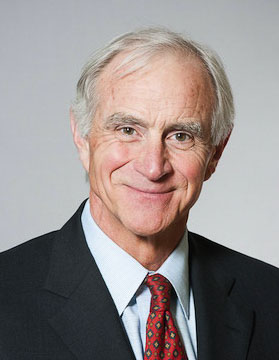Roger Stark, senior fellow of the Washington Policy Center for Health Care, discusses how the COVID-19 pandemic has impacted wealth redistribution and government control of our health care delivery system
This opinion piece was produced and first published by the Washington Policy Center. It is published here with the permission of and full attribution to the Washington Policy Center.

Roger Stark
Washington Policy Center
Over the weekend, the federal Department of Health and Human Services released the latest Obamacare enrollment numbers. (here) Supporters of the Affordable Care Act are praising the increase in enrollment as a testimony to the effectiveness of the law. Let’s drill down on the numbers and see what the reality is.
As background, although the law was passed in 2010 and taxes to pay for the law began right away, the actual benefits of Obamacare did not start until 2014. From a health insurance standpoint, there are essentially two main benefits of the law. Anyone who earned up to 400 percent of the federal poverty level could purchase health insurance in the exchanges. Any low-income, able-bodied adult, 18 to 64 years of age, could sign up for Medicaid if their state had approved the ACA Medicaid expansion.
The enrollment numbers gradually increased to 20 million, with half of those newly insured in the Medicaid expansion and the other half in the exchanges where at least 80 percent received subsidies. (here)
The COVID-19 pandemic has been a game-changer. The government quarantine forced business closures across the country which led to millions of workers losing their employer-paid health insurance. At the same time, many of these workers lost their paychecks and became “low-income.” No surprise, millions of Americans turned to the government for health insurance.
What do the most recent numbers show us? There are now 31 million people enrolled in Obamacare. The expanded Medicaid now has 14.8 million enrollees and the exchanges have 11.3 million enrolled. So what about the other five million people? One million are enrolled in their state’s basic health plan, which in most cases is a near-total taxpayer subsidized health plan administered through the state’s exchange. The remaining four million people were previously eligible for the traditional Medicaid program and just recently enrolled.
In other words, 19 million of the 31 million total (over 60 percent) are enrolled in the Medicaid entitlement. Advocates can feel good that these people all have health insurance. Yet Medicaid is poor-quality insurance which, except in very specific cases, doesn’t improve quality of life or extend life. (here)
In addition, the Biden $1.9 trillion American Rescue Plan Act of 2021 provided greater subsidizes in the Obamacare exchanges. The Act eliminated, albeit for two years, the 400 percent FPL requirement for taxpayer subsidizes. It’s no wonder that enrollment increased. (here)
Bottom line, though, Obamacare still has not provided universal health insurance coverage, nor has it come close to holding down the ever-rising health care costs in the U.S. It is, however, an effective wealth redistribution plan and it is another incremental step to complete government control of our health care delivery system.
Roger Stark is a senior fellow at the Washington Policy Center for Health Care.




